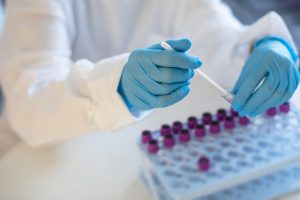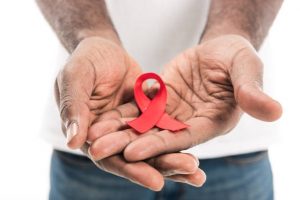Spotlight on World Cancer Day 2011
World Cancer Day is marked on 4 February to raise awareness of the global impact of cancer and increase understanding of prevention, detection, treatment and care.
Key Facts:
-
Cancer is a leading cause of death worldwide: it accounted for 7.4 million deaths (around 13% of all deaths) in 2004

- Lung, stomach, liver, colon and breast cancer cause the most cancer deaths each year
- The most frequent types of cancer differ between men and women
- More than 30% of cancer deaths can be prevented
- Tobacco use is the single most important risk factor for cancer
- Cancer arises from a change in one single cell. The change may be started by external agents and inherited genetic factors
- Deaths from cancer worldwide are projected to continue rising, with an estimated 12 million deaths in 2030
Cancer is a generic term for a large group of diseases that can affect any part of the body. Other terms used are malignant tumours and neoplasms. One defining feature of cancer is the rapid creation of abnormal cells that grow beyond their usual boundaries, and which can then invade adjoining parts of the body and spread to other organs. This process is referred to as metastasis. Metastases are the major cause of death from cancer.
Global burden of cancer
Cancer is a leading cause of death worldwide. The disease accounted for 7.4 million deaths (or around 13% of all deaths worldwide) in 2004. The main types of cancer leading to overall cancer mortality each year are:
- lung (1.3 million deaths/year)
- stomach (803 000 deaths)
- colorectal (639 000 deaths)
- liver (610 000 deaths)
- breast (519 000 deaths)
More than 70% of all cancer deaths occurred in low- and middle-income countries. Deaths from cancer worldwide are projected to continue rising, with an estimated 12 million deaths in 2030.
The most frequent types of cancer worldwide (in order of the number of global deaths) are:
- Among men – lung, stomach, liver, colorectal, oesophagus and prostate
- Among women – breast, lung, stomach, colorectal and cervical
What causes cancer?
Cancer arises from one single cell. The transformation from a normal cell into a tumour cell is a multistage process, typically a progression from a pre-cancerous lesion to malignant tumours. These changes are the result of the interaction between a person's genetic factors and three categories of external agents, including:
- physical carcinogens, such as ultraviolet and ionizing radiation
- chemical carcinogens, such as asbestos, components of tobacco smoke, aflatoxin (a food contaminant) and arsenic (a drinking water contaminant)
- biological carcinogens, such as infections from certain viruses, bacteria or parasites
Some examples of infections associated with certain cancers:
- Viruses: hepatitis B and liver cancer, Human Papilloma Virus (HPV) and cervical cancer, and human immunodeficiency virus (HIV) and Kaposi sarcoma
- Bacteria: Helicobacter pylori and stomach cancer
- Parasites: schistosomiasis and bladder cancer
Ageing is another fundamental factor for the development of cancer. The incidence of cancer rises dramatically with age, most likely due to a build-up of risks for specific cancers that increase with age. The overall risk accumulation is combined with the tendency for cellular repair mechanisms to be less effective as a person grows older.
Tobacco use, alcohol use, low fruit and vegetable intake, and chronic infections from hepatitis B (HBV), hepatitis C virus (HCV) and some types of HPV are leading risk factors for cancer in low- and middle-income countries. Cervical cancer, which is caused by HPV, is a leading cause of cancer death among women in low-income countries.
In high-income countries, tobacco use, alcohol use, and being overweight or obese are major risk factors for cancer.
How can the burden of cancer be reduced?
Knowledge about the causes of cancer, and interventions to prevent and manage the disease is extensive. Cancer can be reduced and controlled by implementing evidence-based strategies for cancer prevention, early detection of cancer and management of patients with cancer.
More than 30% of cancer could be prevented by modifying or avoiding key risk factors, according to a 2005 study by international cancer collaborators (Danaei et al). Risk factors include:

- tobacco use
- being overweight or obese
- low fruit and vegetable intake
- physical inactivity
- alcohol use
- sexually transmitted HPV-infection
- urban air pollution
- indoor smoke from household use of solid fuels
Prevention strategies:
- increase avoidance of the risk factors listed above
- vaccinate against HPV and HBV
- control occupational hazards
- reduce exposure to sunlight
Early detection
About one-third of the cancer burden could be decreased if cases were detected and treated early. Early detection of cancer is based on the observation that treatment is more effective when cancer is detected earlier. The aim is to detect the cancer when it is localized (before metastasis). There are two components of early detection efforts:
- Education to help people recognize early signs of cancer and seek prompt medical attention for symptoms, which might include: lumps, sores, persistent indigestion, persistent coughing, and bleeding from the body's orifices
- Screening programmes to identify early cancer or pre-cancer before signs are recognizable, including mammography for breast cancer, and cytology (a "pap smear") for cervical cancer
- Treatment and care
- Treatment aims to cure, prolong life and improve quality of life for patients. Some of the most common cancer types, such as breast cancer, cervical cancer and colorectal cancer, have high cure rates when detected early and treated according to best practice. Principal treatment methods are surgery, radiotherapy and chemotherapy. Fundamental for adequate treatment is an accurate diagnosis through imaging technology (ultrasound, endoscopy or radiography) and laboratory (pathology) investigations
- Relief from pain and other problems can be achieved in over 90% of cancer patients through palliative care. Effective ways exist to provide palliative care for patients and their families in low resource settings
WHO response
In 2008, WHO launched its Non-communicable Diseases Action Plan. The Cancer Action Plan is currently under development. WHO, other United Nations organizations and partners collaborate on international cancer prevention and control to:
- Increase political commitment for cancer prevention and control;
- Generate new knowledge, and disseminate existing knowledge to facilitate the delivery of evidence-based approaches to cancer control;
- Develop standards and tools to guide the planning and implementation of interventions for prevention, early detection, treatment and care;
- Facilitate broad networks of cancer control partners at global, regional and national levels;
- Strengthen health systems at national and local levels; and
- Provide technical assistance for rapid, effective transfer of best practice interventions to developing countries.
[Source: World Health Organization]
The NHLS contributes to the fight against cancer
During 2009-2010, the National Health Laboratory Service (NHLS) amalgamated Cancer Epidemiology Research Group (CERG) and the National Cancer Registry (NCR) with the National Institute for Occupational Health (NIOH), to optimise collaboration and the sharing of epidemiological expertise and resources.
 CERG aims to identify and quantify the causes of human cancer in South Africa, focusing on those that are potentially preventable, to inform policy on cancer prevention and control.
CERG aims to identify and quantify the causes of human cancer in South Africa, focusing on those that are potentially preventable, to inform policy on cancer prevention and control.
The NCR is a surveillance unit whose major function is to collate and analyse newly diagnosed cancer cases and report annual cancer incidence rates. The NCR is a pathology-based cancer registry whose source of data is public and private histopathology, cytology and haematology laboratories, nationwide.
Work-related cancers are a major concern but under-investigated in South Africa. The closer association between these NHLS entities aims to promote the identification of risk occupations and industries in the country, with the potential to target interventions. The enhancement of the Cancer Registry and the imminent Cancer Regulations will increase and improve the surveillance capacity of the NCR and provide reports which will assist in cancer control.
It is anticipated that the Cancer Regulations will be incorporated into the National Health Act in due course; this will enable the NCR to bring its pathology-based database up to date, and open the way for population-based cancer registries to be developed within South Africa.
Useful Links:
CANSA
Union for International Cancer Control
WHO Fight Against Cancer: Strategies that prevent, cure and care
To Sign the World Cancer Declaration click here….




